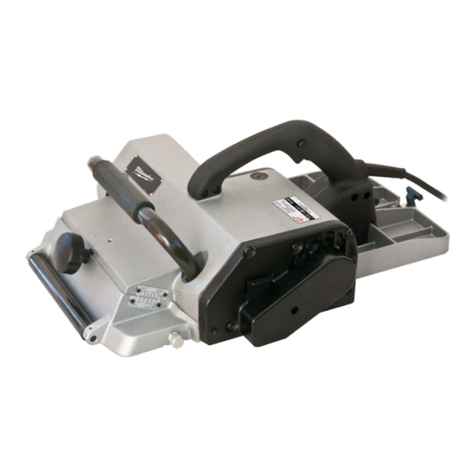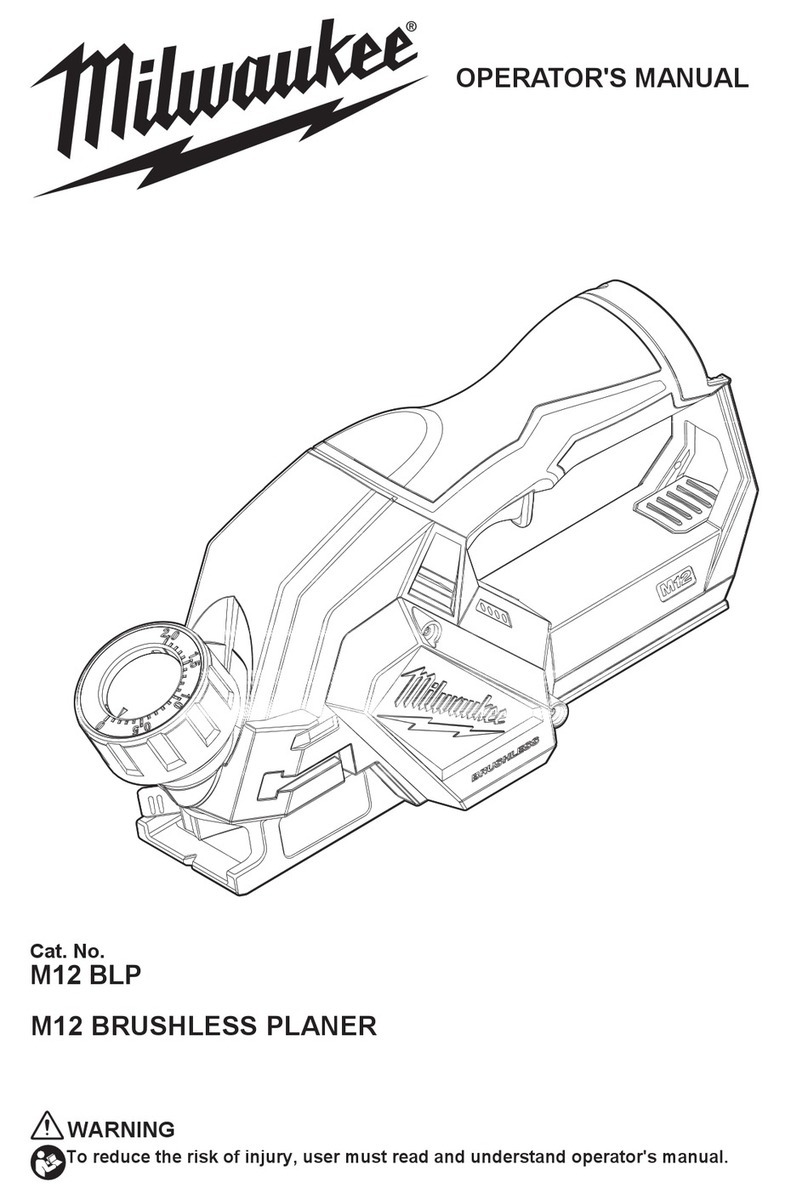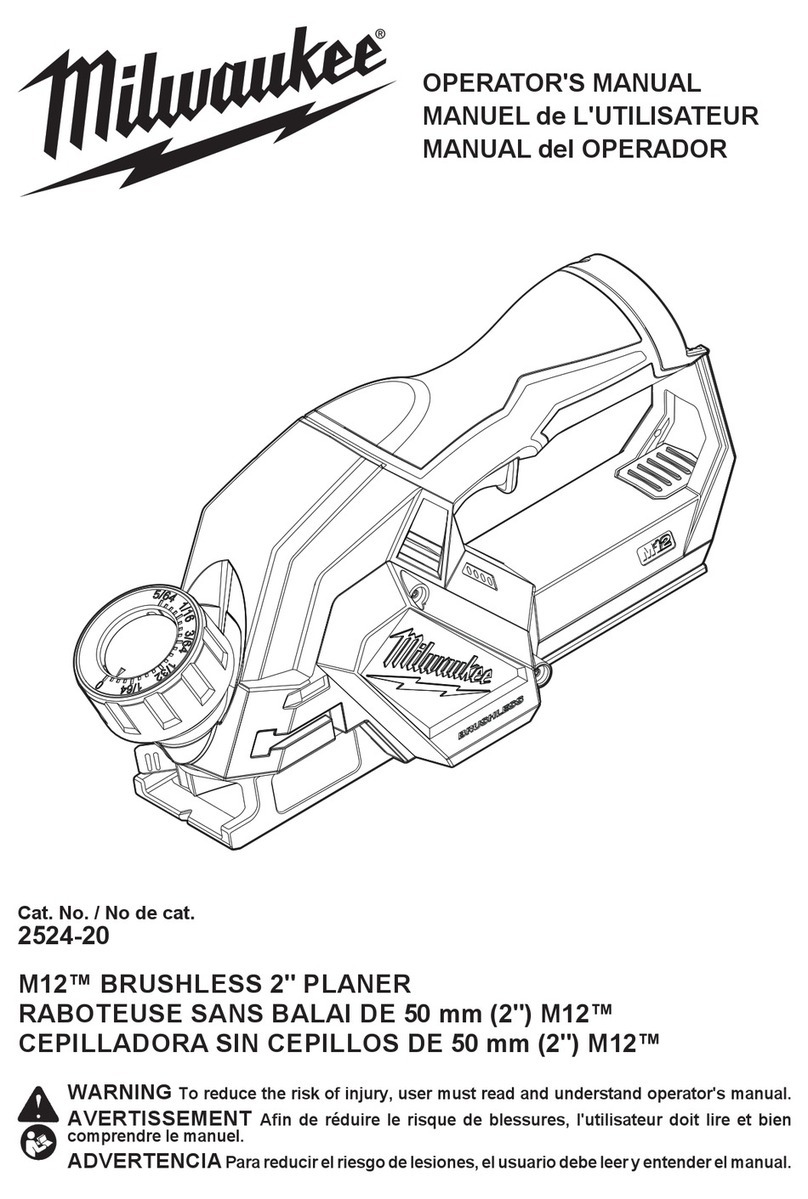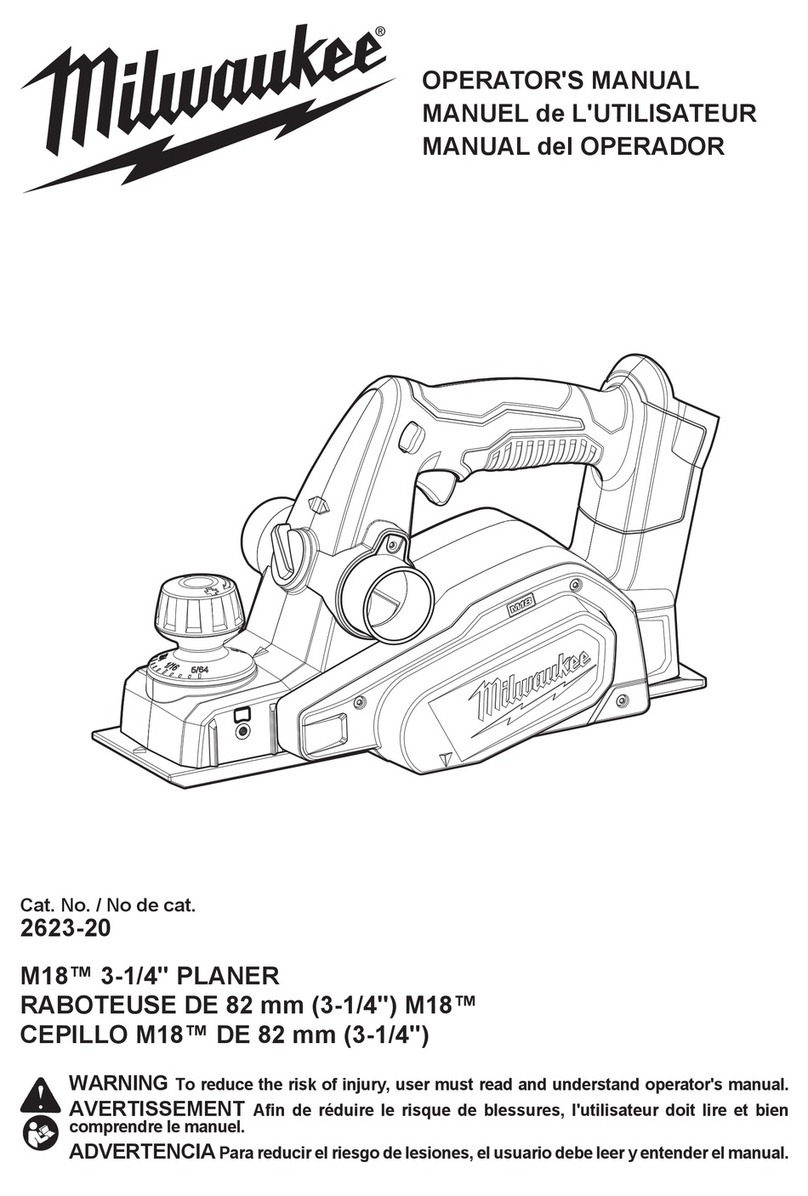Milwaukee M12 BLP User manual
Other Milwaukee Planer manuals

Milwaukee
Milwaukee PR 320 User manual

Milwaukee
Milwaukee M12 BLP User manual

Milwaukee
Milwaukee M18 BP-0 User manual

Milwaukee
Milwaukee M18 BP User manual

Milwaukee
Milwaukee M18 BP User manual

Milwaukee
Milwaukee 2623-20 User manual

Milwaukee
Milwaukee M18 BP User manual

Milwaukee
Milwaukee M12 2524-20 User manual

Milwaukee
Milwaukee M18 2623-20 User manual
Popular Planer manuals by other brands

Scheppach
Scheppach Plana 3.0 Translation from the original instruction manual

Felisatti
Felisatti PF180/1500 operating instructions

Melbourne
Melbourne MTC-49407 owner's manual

VARO
VARO POWERplus POW1520 manual

Powermatic
Powermatic 209 Operating instructions and parts manual

DeWalt
DeWalt DW 1150 Operation, adjustmants, maintenance, spare parts





















